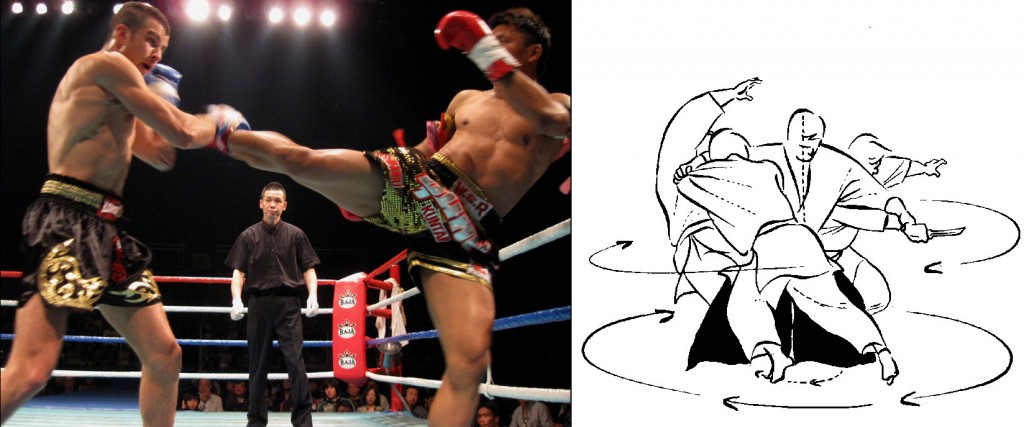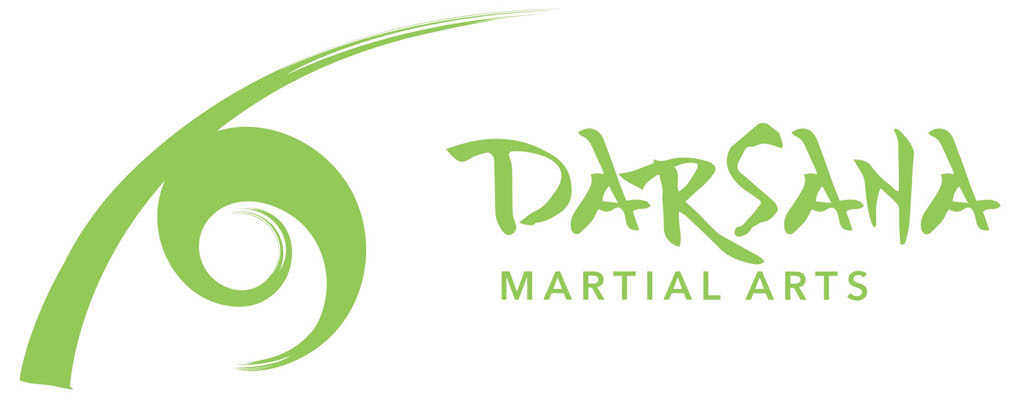We hear these terms so often, to describe so many different kinds of martial arts, that they begin to lose all meaning.
After many years of studying martial arts, I’ve formed specific definitions of my own. In the spirit of making terms precise enough for everyday use, I offer them to you.
I’ll start with hard style and soft style:
 The terms hard and soft, when relating to the martial arts, imply a way of dealing with your opponent’s force. In essence, hard styles meet their opponent’s force with force, using solid blocks, strong postures, and powerful attacks fueled by strength, mass, and speed. Soft styles on the other hand attempt to blend with their opponent’s force, using fluid movements and timing to avoid, deflect, and redirect their opponent’s attacks.Think of hard and soft as two extremes at either end of a continuum, with hard style being a complete force meets force head-on approach, and soft style being a complete blending of forces in total harmony approach. Most styles of martial arts fall somewhere in between.
The terms hard and soft, when relating to the martial arts, imply a way of dealing with your opponent’s force. In essence, hard styles meet their opponent’s force with force, using solid blocks, strong postures, and powerful attacks fueled by strength, mass, and speed. Soft styles on the other hand attempt to blend with their opponent’s force, using fluid movements and timing to avoid, deflect, and redirect their opponent’s attacks.Think of hard and soft as two extremes at either end of a continuum, with hard style being a complete force meets force head-on approach, and soft style being a complete blending of forces in total harmony approach. Most styles of martial arts fall somewhere in between.
Aren’t external martial arts and internal martial arts the same as hard style and soft style? Not exactly….
Internal martial arts, as the name implies, is focused on what’s happening inside of you: inside your body and inside your mind. An internal martial artist spends a lot of time turning his awareness inward, and cultivating sensitivity to the balance of relaxation and tension in his body. While keeping his joints aligned and his muscles relaxed, he can use his intention, his willpower, to transfer energy through his body. By energy, I mean force. Not “The Force” (as in “Use the Force, Luke”), but actual, physical force. When this internal force is projected out, say through a palm strike, it’s called Fa jin, or explosive force.
 External martial arts on the other hand, focus on posture, position, technique, tactics and other…external stuff. To an external practitioner, the most important thing is how he moves in relation to his opponent. All the aspects of a system of martial arts that answer the question: “What do I do if my opponent does this?” are external aspects.
External martial arts on the other hand, focus on posture, position, technique, tactics and other…external stuff. To an external practitioner, the most important thing is how he moves in relation to his opponent. All the aspects of a system of martial arts that answer the question: “What do I do if my opponent does this?” are external aspects.
And this means…?
It means a martial artist can be an external practitioner of a soft style, an internal practitioner of a hard style, or any other combination. Personally, I think a combination of all of the above makes for the best martial arts. The hard approach breaks down against a bigger, stronger opponent. The soft approach will require some of the hard to get the job done. Internal development without external skill has no outlet, and external skill is limited to athletic ability without internal development.
The trick is to understand how each aspect compliments the others. There are a few good schools out there that strike that balance. This is one of them. Wherever you choose to train, evaluate your own practices. Ask yourself if you can enhance what you already do by adding in some aspect of the other approaches. Broaden your horizons and never stop learning.
“I have not invented a ‘new style,’ composite, modified or otherwise that is set within distinct form as apart from ‘this’ method or ‘that’ method. On the contrary, I hope to free my followers from clinging to styles, patterns, or molds.” – Bruce Lee



A very interesting article about soft and hard martial arts. Worth reading about the two different skills. Please keep sharing such nice articles.
So glad you took something from it. Thank you for reading. You may also like some of the other articles on our blog: darsanamartialarts.com/blog/